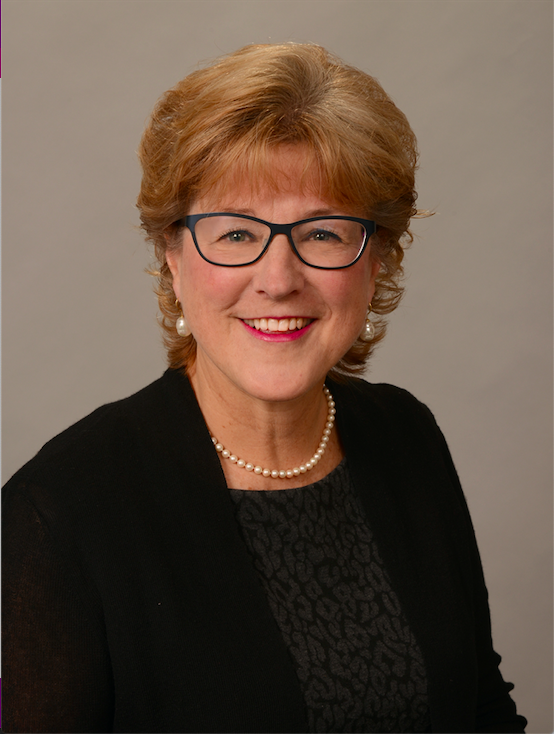Article
Multiple Barriers Inhibit Optimal Treatment of Endometriosis: Dr Robin Kroll
Author(s):
Women with endometriosis may experience a delay in optimal care due to a variety of reasons including cultural beliefs, prior authorization hurdles, and more, explained Robin Kroll, MD, medical director, Seattle Clinical Research Center
Women who experience endometriosis will often see multiple providers before receiving adequate treatment or might be so used to other women experiencing the same pain that they don’t even seek care, explained Robin Kroll, MD, medical director, Seattle Clinical Research Center.
Educating women that the pain they are experiencing might not be normal is crucial, she told The American Journal of Managed Care® (AJMC®).
In this second part of her interview with AJMC®, Kroll discusses complications and comorbidities with endometriosis, barriers to optimal treatment, unmet needs of patients, and more.
Check out the first part of the interview.
AJMC®: How long should a woman expect it to take for treatment to provide effective relief? At what point do you deem it a failure and look to use something else?
Kroll: It depends at what point in the menstrual cycle a woman starts. If she starts elagolix (Orilissa) or relugolix (Myfembree) at the beginning of her cycle, she may see a good response during that first cycle. If she starts it right before her period, she's really not going to see any response. Most women who start at the beginning of their cycle will see some improvement in that first cycle, but maximal improvement is going to be achieved around the third cycle. We really encourage women to give it 3 cycles.
AJMC®: What's been your experience with utilization management strategies—such as prior authorization, preauthorization, and step therapy—in patients with endometriosis? Does this have any impact on treatment delays, and if there are, what is the impact of that?
Kroll: This has been a really big struggle from the start. It gets better as a drug is on the market longer. Certainly, we see some differences with different payers. We are very happy that they were not requiring a laparoscopy. When Orilissa first came on the market, they were requiring failure with birth control pills and nonsteroidal anti-inflammatory drugs (NSAIDs). I believe there was one payer requiring laboratory tests that were really not medically necessary.
Generally, it's the cost. The cost is prohibitive. The patient has to pay out of pocket and getting insurance to cover the cost was a big barrier. You have 2 areas where it's a barrier. One is you may have patients who cannot take hormonal contraceptives, and this can be a problem. They can't tolerate NSAIDs, so they can't utilize first-line therapy. Then we have patients where the amount of work that the office staff had to go through, made it not really practical. The providers would get discouraged very early on. They'd write a few prescriptions, and their medical assistant would come back and say, “If you want me to keep working on this preauthorization that’s fine, but I can't help you with the rest of your patient days.” People stop writing things very quickly when that kind of happens. Then as things get more streamlined and it gets easier, the doctors have already kind of gotten turned off, because it's just too much work and they don't have the time because they've got 20 other patients to tend to.
AJMC®: What are some other potential complications and comorbidities that we need to be cognizant of both with treated and untreated endometriosis?
Kroll: One of the biggest comorbidities is quality of life. Dyspareunia can cause lots of relationship issues. Infertility is a big problem with endometriosis. We don't fully understand the relationship between the severity of the endometriosis and infertility, but it can be a problem. Women lose their jobs over endometriosis if they're not functioning during their periods or they're not functioning as well, or they have pain during the course of their cycle. These are all important issues that can cause a problem for women.
AJMC®: Are there any other barriers that you would say inhibit optimal treatment of endometriosis and any complications? How can clinicians, payers, and even patients, minimize barriers?
Kroll: One of the first barriers is that the literature really supports that women can go to multiple providers and that can take multiple years before they get adequate treatment for their endometriosis. One is cultural. There can be a familial component. If a woman is used to the fact that her mother and her sisters weren't very functional during their period, she may assume that this is normal and accept that and not seek treatment. There are women who will go when they're 18 years old or 22 years old to their family doctor and say, “I have really painful periods.” Their doctor will go, “Well, it's all in the eye of the beholder. Take some ibuprofen and see you next year.” They don't understand that's not appropriate.
Then we have patients who maybe will come to the gynecologist and will say this could be a number of different things and let's get an ultrasound, check you out and talk to them about how there are lots of causes to the pain and one of them can be endometriosis, but we're just going to start with something simple with NSAIDs and birth control pills and we're going to see how you do. But if it doesn't work, we can move on from there. Women don't come back because they're afraid or they just don't think there's much else that can be done, and they don't get further treatment. Then when a woman does come back, and she says “This isn't working really well. What else can you do for me?” You say, “We have these drugs. I have this GnRH antagonist, which works really well.” The woman reads about it, and she reads about Lupron, the GnRH agonist, and she gets scared, and she doesn't want to take it, or she wants to get pregnant now and she's concerned about that, Women do need to use contraception while they're on the GnRH antagonist, because it is possible to get pregnant—more so with elagolix than with relugolix. These are all barriers.
Then, of course, the final barrier comes when we write the prescription, and the patient can't get it because she can't afford it, or insurance won't approve it.
AJMC®: Any other unmet needs in these patients that you wanted to elaborate on?
Kroll: I think education is really important and for women to understand that painful periods and painful sex are not something that they need to put up with. This may be unpopular, but family practitioners and family nurse practitioners provide wonderful, wonderful care for many women, but when a woman has a real problem, seeing a woman's health specialist really makes a big difference. Also I hate to say it, but women have to come back and it's really hard. I hope that with the days of telemedicine not going away, that's going to be a big improvement. If what you're doing isn't working, you need to move on and try something else and not get discouraged when there's some difficulty with insurance coverage. A lot of these women who got denied last year, the formulary committees have caught up. Now they're approved, but they don't know that, so they don't come back and try to get the appropriate treatment.
AJMC®: What are you working on in endometriosis that you're excited to share?
Kroll: There are a couple of things. One is that the GnRH antagonist are only approved for 1 to 2 years because of bone density issues. We’re looking at more long-term data so that women can have longer-term treatments with these. We’re looking at pain management and other options for pain management. There are some new drugs that are in development that may or may not prove to be helpful in terms of the treatment of endometriosis.
I would also strongly encourage women to consider participating in clinical trials. That's the only way we've gotten where we are so far and that we'll continue to make inroads.


